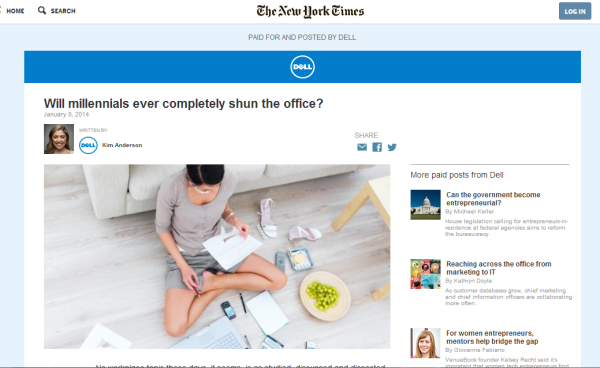Is The Opposite Of A Viewable Display Ad…‘Unviewable’?
Out-of-view ads are the black sheep of the ad-tech industry. Long considered wasteful, inefficient, and ineffective, they have been relegated to the flotsam and jetsam on the water’s edge of advertising. But does that have to be an accepted “meme”? Maybe not. Every toddler learns absolutes: the opposite of up is down, and the opposite […]
Out-of-view ads are the black sheep of the ad-tech industry.

But does that have to be an accepted “meme”? Maybe not.
Every toddler learns absolutes: the opposite of up is down, and the opposite of more is less. And so on.
But, is the opposite of a viewable ad an “unviewable ad”? No.
First of all, it’s perfectly understandable why digital stakeholders would look askance at unviewable inventory. Why wouldn’t they? Who wants to pay for an ad that simply can’t be seen — purely unimpressionable in every sense of the word?
Unviewable ≠ Fraudulent
We must separate the “unviewable” ad discussion from the fraudulent conversation, as they are two separate issues. To be certain, ad fraudsters should be tarred and feathered — no question about it. Yet, many in our industry are inadvertently conflating and intertwining less- or non-viewable ads with fraudulent and malicious ads.
Putting the issue of fraudulent traffic aside for now, how can we make unviewable ads more viewable? Instead of being dismissed outright as a hopeless loss and wasted effort, what if we tried to look at it more as an opportunity for better creative execution?
An out-of-view ad could be pulled into view through a clever, creative execution. One example could be a “native” ad — in other words, an advertisement that is closely related to content on the page.
This should actually increase the probability that an ad will be seen precisely because it’s relevant. Therefore, this becomes an interaction that may make an unseen ad… well, seen. Presto!

Screenshot: New York Times Dell Native Ad
In many traditional marketers’ minds, above- and below-the-fold represent old-school thinking around the way media was bought and sold. But in digital, a user’s behavior never follows a traditional model. And, subsequently, neither should the advertiser.
That’s because a user’s behavior is not linear: sometimes it goes up, sometimes down, and sometimes to the left and to the right. They will conduct branding or engagement activity in any place they choose on a web page. And if you add a contextually relevant ad or other creative campaign execution, that may succeed in bringing that user right back into view.
Traditional Norms Are Becoming Outdated
Viewability is in early days, and as it goes mainstream and into overdrive, all ad-tech stakeholders will increasingly know which ads are viewable and which aren’t. As this occurs, the old-school norms will undoubtedly have to adjust.
Viewability as we currently know it is at an inflection point — evolving beyond an imaginary line in the digital sand to become a central force in driving measurement of advertising interaction and engagement online.
The viewable/unviewable ad discussion naturally raises some important operational and “nuts-and-bolts” questions, such as, how publishers should think about implementing a viewability plan that incorporates moving the “digital line in the sand” on their web pages, and so forth.
It also begs the question of what to do with all those unviewable impressions: industry estimates show that about 40-60 percent of ads are not viewable. Publishers who take a creative approach toward addressing unviewable parts of their websites will realize they can convert those once disparaged impressions into a digital pot of gold — for instance, through monetizing their site using native ads that lead the user to interact more with custom and relevant content.
And that’s actually the topic of a whitepaper we’e putting together on creative technology vendors, so expect to hear more about it here next month. Our goal is to help the market understand how to make smart decisions around native, how to find the right native ads partner, and in doing so, how publishers can leverage native ads to increase ROI and enhance the bottom line.
Stay tuned!
Opinions expressed in this article are those of the guest author and not necessarily MarTech. Staff authors are listed here.
Related stories
New on MarTech